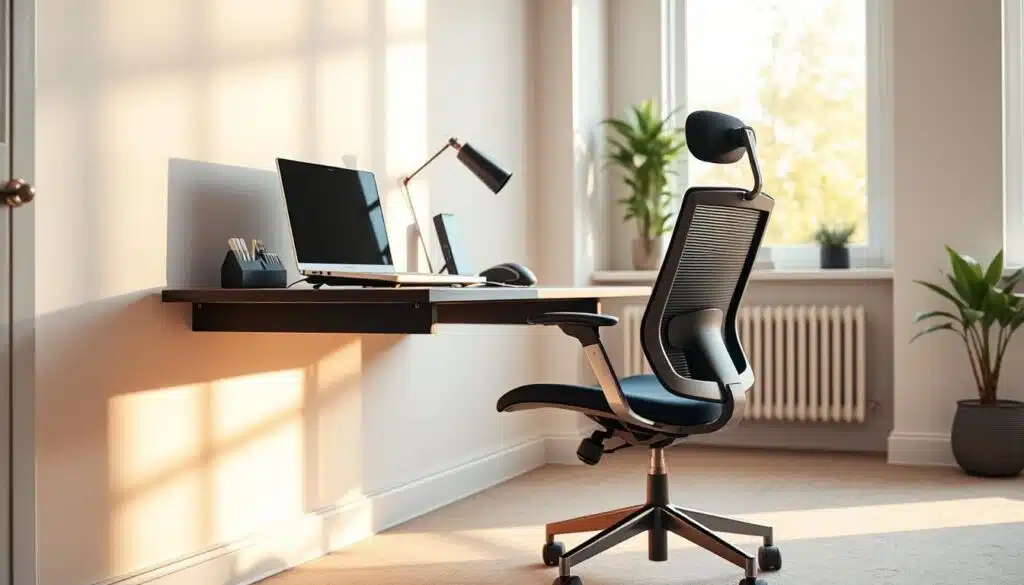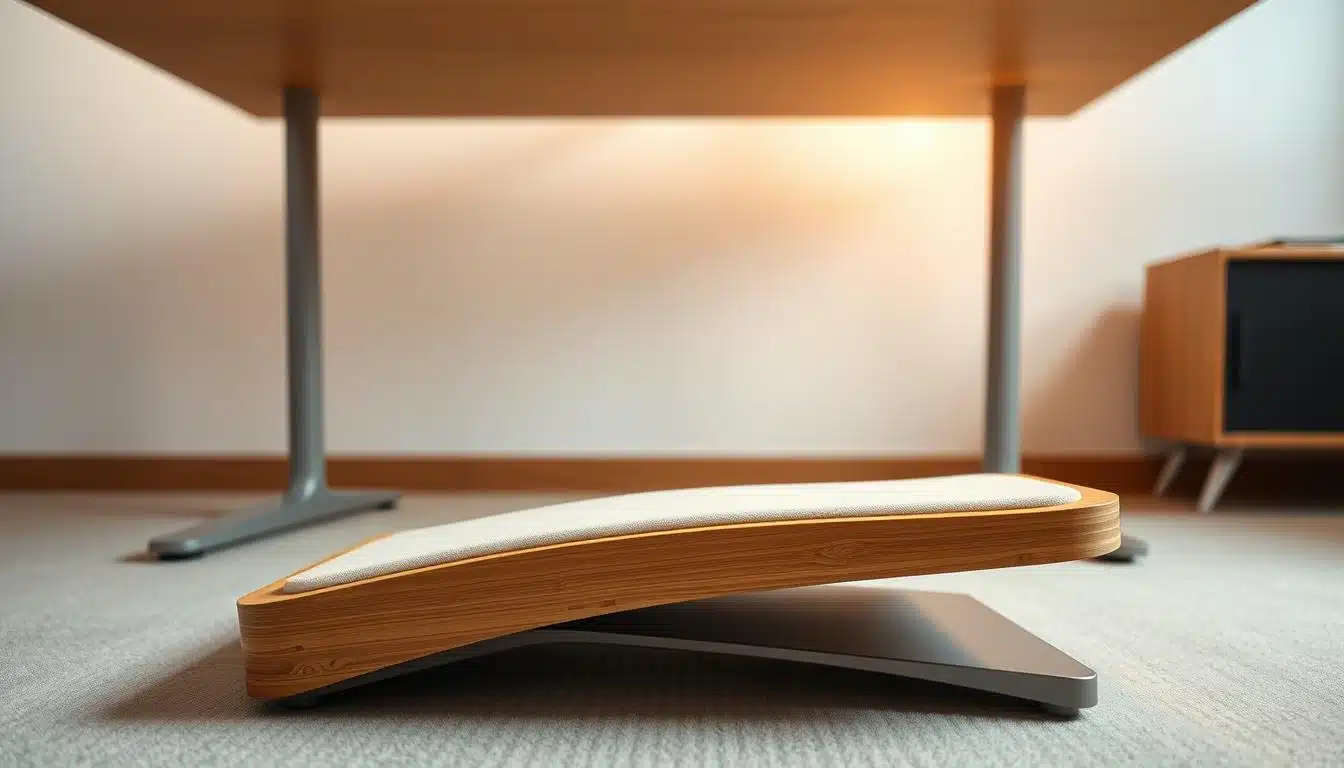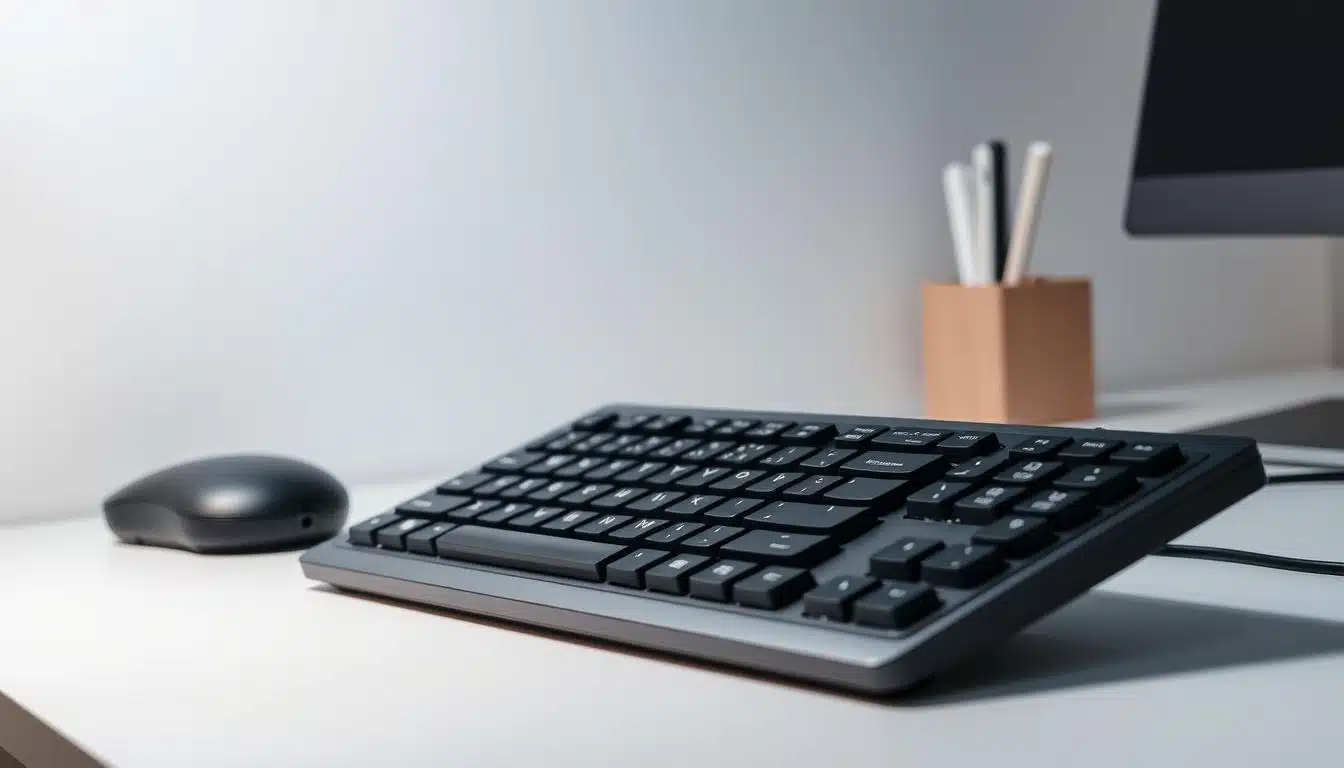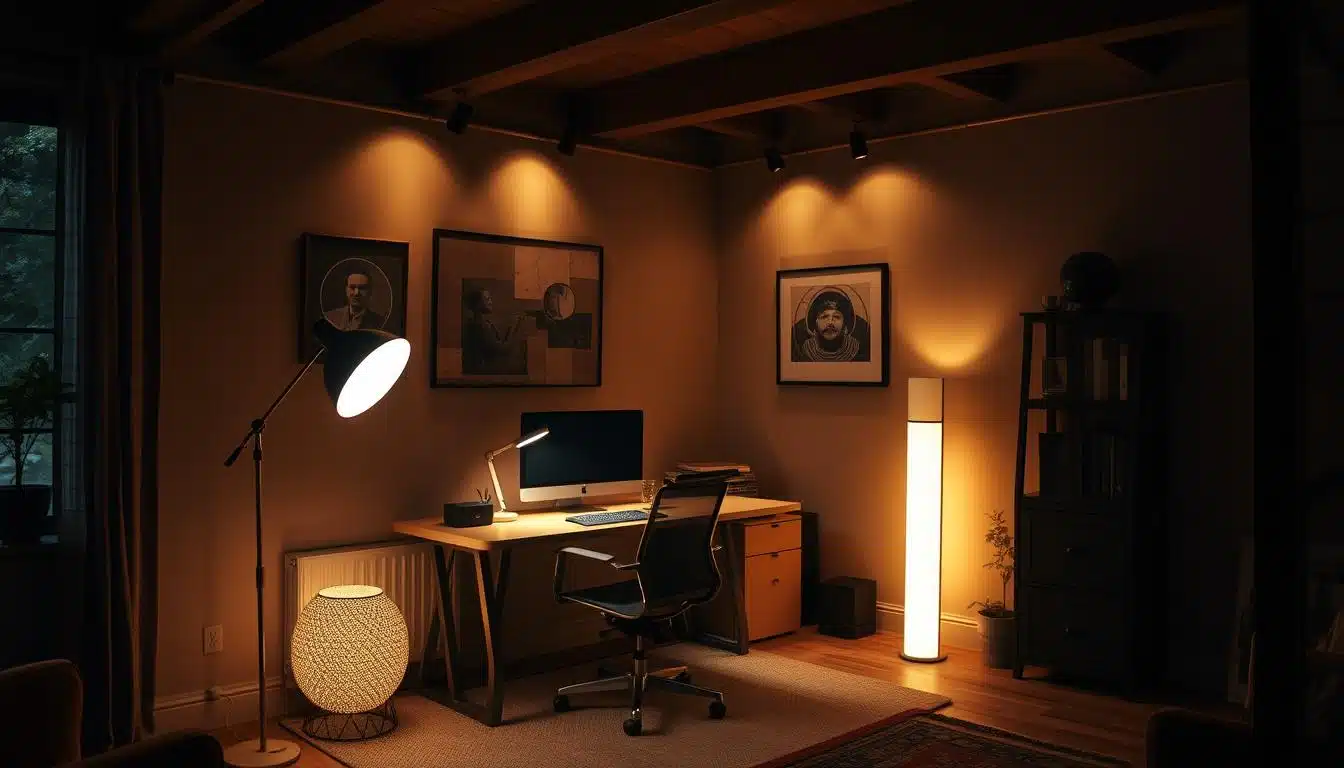Having a comfy workspace boosts productivity, especially now that many work from home. Wall-mounted desks are great for this. They let you customize your setup to suit your needs perfectly. In this article, we’ll explore key ergonomic tips for your wall-mounted desk. These tips will help you maintain proper posture and minimize strain. By applying these suggestions, your workspace will become a comfortable and productive area.
Understanding Ergonomics in Your Workspace
It’s vital to know about ergonomics when setting up your workspace. This means your work area matches how your body naturally moves. It leads to less physical stress and more comfort when you’re working long hours. To get this right, look for chairs and desks you can adjust. This lets you change the height to fit your needs perfectly.
Having your monitor at the right height is also key to avoid neck pain. It should be set up so you’re looking straight at it, not up or down. Good lighting matters too. It makes it easier to see and helps stop your eyes from getting tired. This keeps your workspace healthier.
By paying attention to these ergonomic tips, you can make your work experience better. You’ll find a good balance between getting things done and staying physically well.

Importance of a Proper Desk Height
Having the right desk height is key for an ergonomic workspace. Most desks are between 28 to 30 inches tall. For taller folks, this might be okay. But, shorter users might need to make some changes. An adjustable desk is great for setting the right height for everyone.
Keeping your desk at the right height is vital for good posture. When you sit, your arms should be even with the ground, and your feet should be flat. If you need to, use things like keyboard trays or footrests to help. The right setup can stop back and shoulder pain, making work more comfortable.
Choosing the Right Monitor Height for Comfort
Finding the ideal monitor height is key for a comfy workstation. The screen’s top should be at or just under eye level. This helps lower neck strain and makes long hours easier on your body. Getting the height right helps you sit naturally while working.
Utilizing Monitor Risers for Eye Level Alignment
Monitor risers are handy for setting your screen at the right height. They bring the screen up to your eyes, making it more comfortable to look at. Try to place the monitor 20 to 28 inches from your eyes. This helps keep your posture right and you less tired.
Considerations for Dual Monitor Setups
Using two monitors means keeping them at the same height. This way, your neck moves less and feels better. An even setup helps you switch between tasks smoothly. Having your monitors aligned right boosts both comfort and work efficiency.
Wall-Mounted Desk Ergonomic Tips
Setting up a wall-mounted desk the right way can boost your desk work and comfort. It’s great for saving space, making your area look neat. Knowing how to do this can help you focus better and get more done.
Benefits of a Wall-Mounted Setup
Wall-mounted desks are good because they don’t use much space. They’re perfect for any room because:
- Space Savings: They give you more room for stuff or moving around while you work.
- Versatile Height Adjustment: You can change the height to what’s comfy for you, helping you sit right.
- Organized Workspace: They help keep your work area clean so you can concentrate better.
Common Mistakes to Avoid
Steering clear of certain mistakes is key to a good desk setup. Watch out for:
- Setting the desk too high or low can make you uncomfortable and slouch.
- Not aligning your monitor right can make your eyes and neck hurt.
- Not using a footrest can make sitting at the desk less comfy.
Utilizing Monitor Mounts for Enhanced Vision
Adding monitor mounts to your workspace changes how it looks and works. They lift your screens to the perfect height. This helps you sit better and gives you more desk space for things. Now, organizing your workspace is easy, helping you clean up and stay focused.
Types of Monitor Arms: Fixed, Adjustable, and Gas Spring
Monitor arms come in different types for different needs. Fixed arms keep your screen steady at one angle, great for jobs that don’t change much. Adjustable arms and gas spring mounts let you move your screen as needed, making your setup more flexible. This flexibility meets your ergonomic needs and boosts your work output.
How to Maximize Space with Monitor Mounts
Monitor mounts can make your workspace better. They help you set up areas for different tasks. By lifting your monitor off the desk, you get more room and less mess. This makes your office neater and helps you work better and happier.
Proper Keyboard and Mouse Positioning
For best comfort at work, it’s essential to set up your keyboard and mouse right. Keep them at elbow height to avoid stretching your arms too much. They should also be close enough to prevent strain injuries.
Importance of Using Wrist Supports
Wrist supports really help ease the strain from typing a lot. They keep your wrist straight to avoid discomfort and tiredness. However, don’t use them too much because your wrist muscles might get weak. Remember to stretch often to keep your muscles healthy and work better.
Choosing Ergonomic Keyboards and Mice
Choosing the right keyboards and mice is key to less wrist stress. Go for ergonomic designs like split keyboards and mice that fit well in your hand. They support a more natural position, which is perfect for long days of work. Picking tools that are comfortable and work well makes a big difference in your work life.
Incorporating a Standing Desk Option
Adding a standing desk to your workspace can make a big difference in your health. It lets you switch between sitting and standing. This can lower the risks from sitting too much.
Moving between positions can lessen back pain, increase energy, and help blood flow better. People often find they can focus better and do more work. Adding a standing desk helps create a workspace that fits different working styles.
Benefits of Switching Between Sitting and Standing
Switching between sitting and standing has many health perks, like:
- Less tiredness, keeping you energized all day.
- Better posture, easing back and neck pain.
- Improved blood flow for better health.
Adjustable Desks: Finding the Right Fit
Choosing an adjustable desk means finding one that suits all heights. It should easily adjust for different tasks, whether you’re typing or meeting with your team. When picking the best ergonomic desk, consider:
- How easy it is to adjust the height.
- The desk’s stability at different heights.
- Extra features like cable management.
Footrests: Essential for Comfort
Footrests are key for those who sit a lot. They help people whose feet don’t touch the ground. By keeping legs right, they make sitting better and ease pain from sitting too much.
Using a footrest with a good chair helps blood flow and cuts down tiredness. When your feet are angled right, you feel more at ease. Adding a footrest to your desk can make you work better.
Using Good Lighting to Reduce Eye Strain
Good lighting is key for a comfy and productive workspace. It makes your workspace look better and helps avoid eye strain. This keeps the work environment healthy.
Types of Lighting for a Productive Workspace
Having different lights can help balance glare and make things easier to see. Here are some options to think about:
- Overhead lighting: A well-placed ceiling fixture provides general illumination and sets the baseline brightness.
- Task lighting: Desk lamps or focused LED lights deliver direct light where it’s needed most, helping reduce eye fatigue.
- Accent lighting: Additional sources, such as wall sconces, enhance the overall ambiance and visibility without overwhelming the primary light source.
LED lights are great for workspaces. They save energy, don’t get too hot, and light up your task area well.
Importance of Natural Light
Natural light is great for making your workspace better. It can make you feel happier and more awake. Putting your desk near a window can help:
- Enhanced productivity: Natural light can elevate concentration levels, making it easier to complete tasks efficiently.
- Improved mood: Exposure to sunlight helps regulate circadian rhythms, positively influencing emotional well-being.
- Reduced eye strain: Natural light reduces the harsh contrasts seen in artificial lighting, promoting comfort for longer work sessions.
Maintaining Good Posture at Your Desk
Good posture at your desk is key for your health and happiness. It stops chronic pain and lets you work better when sitting right. To keep your spine happy and your body feeling good, it’s important to sit correctly.
Tips for Achieving a Neutral Spine Position
To keep your spine just right, follow these tips:
- Choose a chair that supports your lower back’s curve.
- Keep your feet flat on the floor for stability.
- Set your monitor at eye level to see easily.
- Use cushions or lumbar support for extra comfort and good posture.
Regular Breaks: The Key to Preventing Fatigue
Short, frequent breaks help keep your blood flowing and muscles happy. Try these ideas:
- Remind yourself to stand or stretch every 30 to 60 minutes.
- Take quick walks to mix up sitting too long.
- Do easy stretches to ease muscle tension.
Personalizing Your Wall-Mounted Desk Setup
Making your workspace your own can make you feel more comfortable and work better. One important part of making your space yours is keeping cables neat to avoid mess. A tidy area not only looks nice but also helps you work more smoothly.
Organizing Cables for a Tidy Workspace
Keeping cables tidy is crucial for a clean desk area. Here’s how you can keep cables organized:
- Use cable clips to keep cables tidy along your desk edges.
- Wrap multiple cables together with cable sleeves for neatness.
- Hide extra cables and power strips in a cable box.
By using these tips, your desk area will look nice and work well too.
Using Accessories to Enhance Functionality
Adding cool desk accessories can really upgrade your wall-mounted desk. Things that add to your desk’s use include:
- Pen holders that make it easy to grab a writing tool.
- Monitor stands that lift your screen to the right height.
- Notepad holders that let you take notes without hassle.
These desk items not only make things easy to find but also keep your desk organized. This makes doing your work more fun and less of a hassle.
Conclusion
Making your workspace ergonomic is key to feeling good and working well. By using tips for wall-mounted desks, you can make your work area suit you better. These changes help keep you physically fit and make you more effective at your job.
It’s important to set up your desk, monitor, and keyboard the right way. Doing so can help you avoid discomfort and stay focused. This transforms an ordinary desk into a productivity powerhouse.
Putting effort into an ergonomic workspace is worth it. Smart design leads to better health and more work done. It shows that even small changes can make a big difference in how well you work today.



